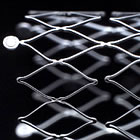Treating peripheral artery disease has proven to be one of the biggest challenges for the interventional cardiologist and radiologist. Compared to the coronary arteries, the arteries in the leg tend to be long and straight, and they aren't in a constant state of motion. However, once a blockage is opened, the peripheral artery has tended to reblock or restenose at a higher rate than the coronaries.
However, results from the Complete SE SFA study showed a target lesion revascularization rate of 8.4% (among the best performances in clinical trials of contemporary self-expanding peripheral stents for the treatment of SFA/PPA lesions). Additionally there were no in-hospital major adverse events, and a total major adverse event rate of 11.0% at 12 months; no stent fracture occurred through 12 months.
Now equipped with SFA and PPA indications, the Complete SE vascular stent can be used to treat a much broader spectrum of patients.
Beyond stents, Medtronic and other companies are developing new technologies to treat PAD: one novel device is the drug-eluting balloon, designed to lower restenosis without leaving a permanent stent in place. Medtronic's IN.PACT drug-eluting balloon program has already begun submission of data to the FDA and is on track to gain approval in the next two years.
This morning's press release from Medtronic, Inc. follows:
FDA Approves Medtronic's Complete 'SE' Vascular Stent for Use in Superficial Femoral and Proximal Popliteal (Leg) Arteries
New Indications for Self-Expanding Device Address Broad Area of Peripheral Artery Disease
September 24, 2013 -- Minneapolis -- Expanding its role in the treatment of peripheral artery disease in the United States, Medtronic, Inc. (NYSE: MDT) announced today that the U.S. Food and Drug Administration (FDA) has approved the Complete SE (self-expanding) vascular stent for use in the lower extremities -- specifically, the superficial femoral artery (SFA) and proximal popliteal artery (PPA), which carry blood through the upper legs.
The same device was originally approved by the FDA for use in the iliac arteries, which perfuse the pelvis. It also has the CE (Conformité Européene) mark for iliac and, most recently, for SFA and PPA indications.
FDA approval of the new SFA and PPA indications was supported by the results of the Complete SE SFA study -- an independently adjudicated single-arm, multicenter trial that enrolled 196 patients at 28 sites in the United States and Europe. The study showed a clinically-driven target lesion revascularization (repeat procedure) rate of 8.4 percent at 12 months, which is among the best performances in clinical trials of contemporary self-expanding peripheral stents for the treatment of SFA/PPA lesions.
Additionally, there were no in-hospital major adverse events (MAE) among study patients, and the total MAE rate at 12 months was 11.0 percent. The Kaplan-Meier estimate of primary patency at 360 days was 90.9 percent; at the time of the last duplex ultrasound assessment, at 553 days, primary patency was 72.5 percent. No stent fractures occurred through 12 months.
The study also showed statistically significant improvements in multiple measures of clinical and functional effectiveness:
- More than 80 percent of the patients had achieved a Rutherford classification of 0 or 1, the favorable end of the 0-6 scale, at 30 days, and that benefit persisted through six months and one year of follow-up.
- On walking assessment measures at 12 months, absolute improvement in impairment was 37 percent, distance was 32 percent, speed was 22 percent and stair climbing was 23 percent.
- 65 percent of the patients showed an improvement of 0.15 or more on their ankle-brachial index (ABI) or toe-brachial index (TBI) scores over the 12-month follow-up period. The mean ABI/TBI score at 12 months was 0.9.
These outcomes were achieved despite the challenging nature of the patient population:
- 45 percent of the patients had diabetes, and 67 percent had a Rutherford classification of 3 or higher at baseline.
- 50 percent of the treated lesions were located in the distal segment of the artery, and 91 percent were moderately or highly calcified.

John Laird, MD |
"The Complete SE vascular stent has demonstrated compelling clinical results in this study, which included a broad spectrum of patient and lesion types," said primary investigator Dr. John Laird, medical director of the UC Davis Vascular Center near Sacramento. "It is also among the most deliverable and easy-to-use devices of its kind."
With risk factors including smoking, diabetes, obesity, high blood pressure, high cholesterol, age (50 or older) and familial history, peripheral artery disease narrows the vessels that supply blood to the body, especially the limbs. Typically characterized by an excessive buildup of plaque in these vessels, the condition can progress to claudication and, without treatment, to critical limb ischemia, which often leads to amputation and premature death.
A variety of treatments are used to restore normal blood flow in patients with peripheral artery disease. Stents are metallic scaffolds used to improve blood flow by expanding the interior diameter of narrowed arteries. These tubular medical devices are implanted in a minimally invasive procedure that uses catheters to access the arterial segment requiring treatment.
In collaboration with leading clinicians, researchers and scientists, Medtronic offers the broadest range of innovative medical technology for the interventional and surgical treatment of cardiovascular disease and cardiac arrhythmias. The company strives to offer products and services that deliver clinical and economic value to healthcare consumers and providers worldwide.
About Medtronic
Medtronic, Inc. (www.medtronic.com), headquartered in Minneapolis, is the global leader in medical technology -- alleviating pain, restoring health and extending life for millions of people around the world.
Any forward-looking statements are subject to risks and uncertainties such as those described in Medtronic's periodic reports on file with the Securities and Exchange Commission. Actual results may differ materially from anticipated results.


